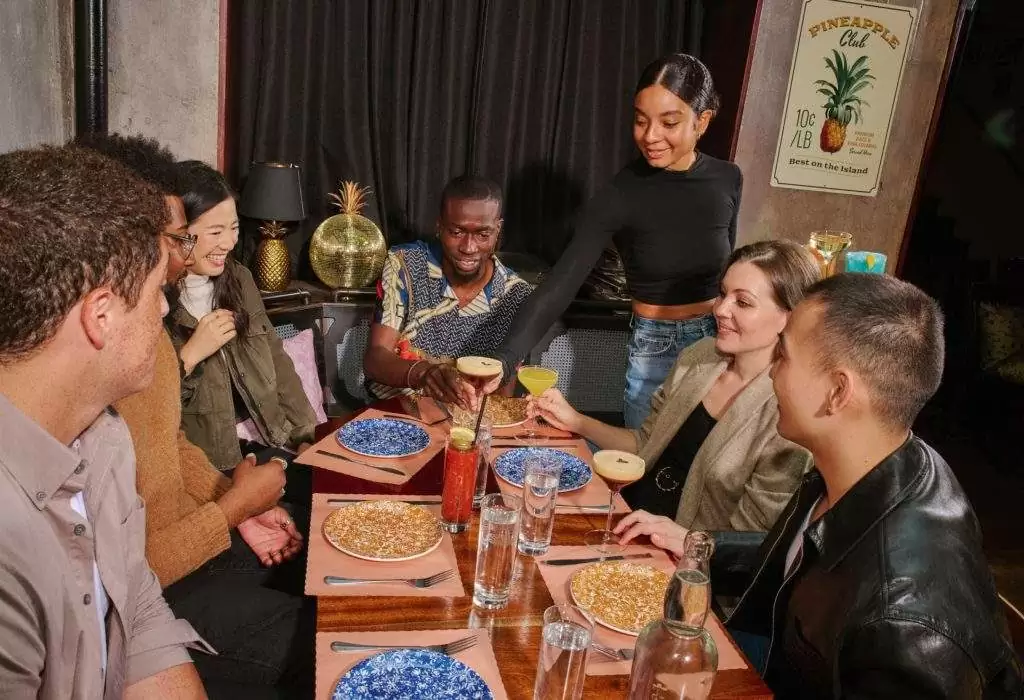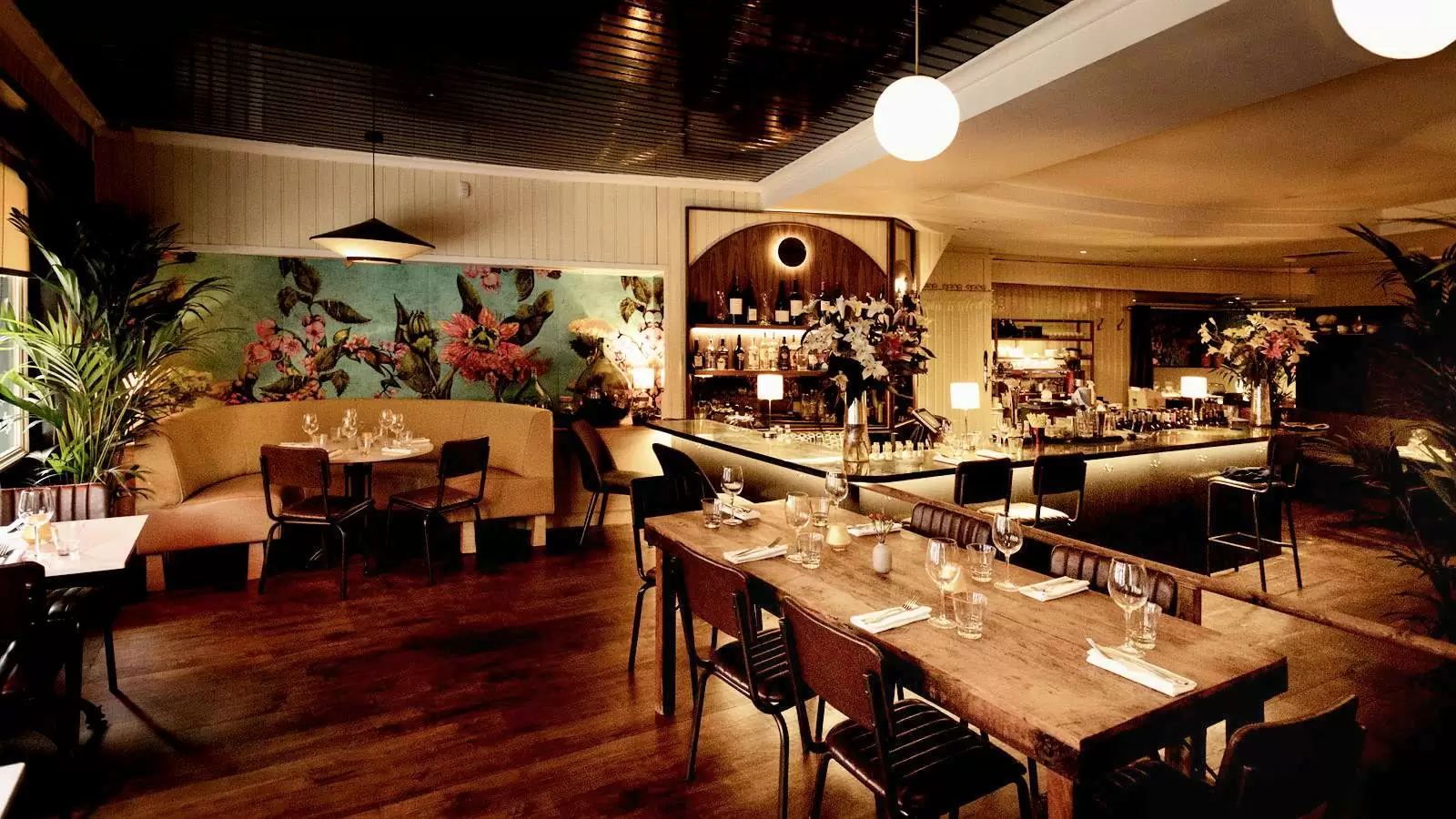The best restaurants serve something more than flawless food: welcoming hospitality that makes every guest feel like a VIP. Regardless of how great the food is, people won’t return to a restaurant if the service stumbles. So the question of how to improve restaurant customer experience is important. The challenge is that great service isn’t any one thing. To improve service, you must attend to the entire guest experience. Everything counts, starting with the way guests are greeted.
Try these 10 strategies to improve the guest experience, and your reputation for superb service will soar.
Jump links
Welcoming a customer in a restaurant
Using guest data to improve service
How to personalise hospitality
Levelling up team training
Managing guest wait
Handling complaints
How to add table touches
Learning from online reviews
How to take care of your team
Welcoming a customer in a restaurant
First impressions count when it comes to how a guest views their restaurant customer experience. Each visitor should be treated like a guest in your home.
As soon as the guest comes through the door, greet them. Say hello and smile. Welcome them by name if possible. (More on this coming up.) Try to seat them promptly or offer them a pleasant place to wait. Don’t forget to keep them updated with accurate information about their wait time.
Using guest data to improve service
It isn’t possible for a restaurant owner, manager, or host to have every returning guest’s name memorised. Use guest profile information to welcome as many guests by name as possible. Check the pre-shift digest to refresh your memory on all returning guests. Glance at it just before reservation times so you can say, “Welcome back, Jane!” with total confidence and sincere warmth.
How to personalise hospitality
According to Experian, 79% of consumers said they are more likely to engage with a personalised offer, with 78% of customers stating that a personalised touch increases their likelihood of a purchase. Personalised hospitality can give a restaurant a big advantage. A well-built guest profile provides an instruction book for how to delight each guest during their dining experience. It should include water and wine preferences; any birthdays, anniversaries or other special occasions; menu likes and dislikes; plus any other bits of information you’ve learned. Preshift reports with these insights lead to hospitality that turns guests into loyal customers.
Levelling up team training
Front of house training should go beyond the nuts and bolts of providing service. In addition to teaching the POS system and your style of serving etiquette, it should include your expectations for service. Remind the team to look guests in the eye, to smile, and say thank you.
It may seem like these aspects of service should go without saying, but it can be easy to lose track of their importance during a hectic shift. Make them part of the onboarding training and remind the team of the importance of being friendly and courteous.
Managing guest wait
In a busy restaurant, it’s unavoidable that sometimes guests will need to wait for a table. Walk-in guests may be prepared to wait, especially during a busy Friday or Saturday night. Using an online waitlist can make that experience better. With their place secure on the waitlist, they can roam around the neighbourhood, knowing they’ll get a notification when their table is ready. For the restaurant, this helps keep the entryway clear. It also helps you give people an accurate wait time.
If a group has a reservation, they may be less understanding about having to wait. Make sure you show them to a comfortable area to hang out until their table is ready. Waits can ding your marks for service from guests, but it is possible to smooth it over. If possible, comping them with a drink or small snack can go a long way.
Handling complaints
Order mistakes, long waits, sold-out menu items, and lack of cleanliness are all negative experiences that can lead to complaints. When confronted with a complaint it helps to remember that at least the person is making the complaint in the moment, when it can be fixed, instead of taking their gripes online for all the world to see.
Keep calm, hear them out, and try to solve the problem. Listening to guest experiences with kindness is sometimes all it takes to resolve the issue. If it’s a wrong order, cold food, or anything you can fix immediately, do it. Comping a bungled food item, a round of drinks, or dessert can fully redeem a restaurant in some guests’ eyes.
How to add table touches
A table touch refers to a policy that asks the manager on duty to visit every table and talk to guests. It’s a way to increase customer care. A table touch means someone other than the server has the opportunity to ask guests how their meal is going while it’s still happening.
Table touches invite customer feedback you can respond to right away. It can increase customer satisfaction. Some guests will take the opportunity to tell you what their server is doing right or what their favourite menu item is. It’s a surefire way to take service to the next level.
Learning from online reviews
Not every guest will take their criticism to a restaurant directly, even if a manager comes by to ask how things are. Many will take their complaints to social media or online to leave a bad review. It can be tempting to put blinders on and avoid reading them, but there’s a lot to be gained from staying on top of online ratings and reviews. Reputation management tools make it easier.
Responding to people who have left negative reviews can sometimes result in improved ratings. According to research from Harvard Business School, a single-star increase can boost a restaurant’s revenue by 5% to 7%.
Most of all, use those reviews to identify areas that need improvement. Notice any patterns. This goes for positive reviews, too. They can reveal strengths you can double down on.
How to take care of your team
When you’re focused on improving the customer experience, don’t overlook the true VIPs: your team. These are the people who directly take care of the guests. If your team is happy and engaged at work, it creates an atmosphere people want to dine in.
Talk to your employees about what is working well for them. Ask how you can support them. Offer opportunities for career growth and development. After all, your guest’s customer experience is totally in their hands.
No matter how successful, most restaurant owners are constantly looking for ways to improve the restaurant customer experience and increase customer loyalty. The 10 factors above can help you exceed customer expectations. The restaurant industry is competitive, and offering top-notch service gives you a major advantage.




